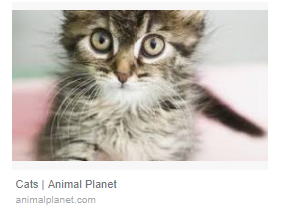The New Desktop Image Search: What You Need to Know
by Anvil on October 5, 2018Search Engine OptimizationGoogle recently rolled out a Desktop Image Search Update that brings it more in line with the Mobile update that occurred in March 2018.
Google also updated their image search algorithm with new ranking factors such as page authority of the page where the image lives and “sites where the image is central to the page, and higher up on the page“.
Some of the features from Mobile Image Search that were pulled over were search refinement bubbles and displaying the URL beneath the image. One update that is especially relevant to SEOs is bringing the captions pulled from the Title Tags over to Desktop.
Both of the images below are being pulled from the same page and, therefore, have the same caption (taken from that page’s metadata):


![]()
Title Tags for Image Search
Well optimized Title Tags should be part of your process for ranking webpages higher, but now it’s also directly relevant to your Image SEO.
Having well-written Title Tags where keyword rich copy is front-loaded before the branding is now applicable to having a more descriptive and click-through-rate optimized captions for your images as well.
While there are many technical ways to optimize your images, the two most important copy-related methods to optimize your images are alt attributes and file names.
Alt Attributes
Alt attributes are a wonderful tool for both ranking web pages and ranking images, however, these are first and foremost for accessibility and, therefore, should not be merely keyword-stuffed. Ensure your alt attribute is descriptive of the actual image and do not include completely unrelated keywords.
Ask yourself this: if your image doesn’t render on the page and the user sees your alt attribute instead, will they have a pretty good understand of what the image is about?
Alt attributes should be generally 16 words or less, but it doesn’t hurt to make them longer. Just keep in mind that the search engine may not crawl that far, therefore, important keywords should be closer to the beginning. A study showed that the search engine typically does not crawl past the 16th word.
Image File Names
Lastly, ensure image file names are descriptive and contain keywords rather than being a nonsensical string of numbers and letters. In addition, separate words with hyphens rather than underscores. Search engines see hyphens as spaces rather than underscores (this is similar to best practices with URLs).
Ask yourself this: If someone saw your image file name, but never saw your images, would they have a pretty good idea of the subject of the image?
If not, there’s a pretty good chance the search engine doesn’t understand what your image is about either.
Copy-Related Best Practice for Image Search Overview
So, the most important “copy-related” best practices for both Mobile and now Desktop Image Search are:
- Ensure that Title Tags have front-loaded descriptive, keyword-rich copy
- Ensure that alt attributes follow both SEO and accessibility best practices
- Ensure that file names are descriptive and keyword rich and give a rough idea of what the image is about at a glance
Why Bother Optimizing Images?
Optimizing your images can boost your webpage’s likelihood to rank higher in regular Google SERPs in addition to Google Image Search. With 59.3% of search going to Google.com and 26.8% going to Google Images, it makes sense to implement changes that can you help you rank higher for both.
Not sure where to start? Contact Anvil to learn more about optimizing images for both the standard SERPs and Image Search.
